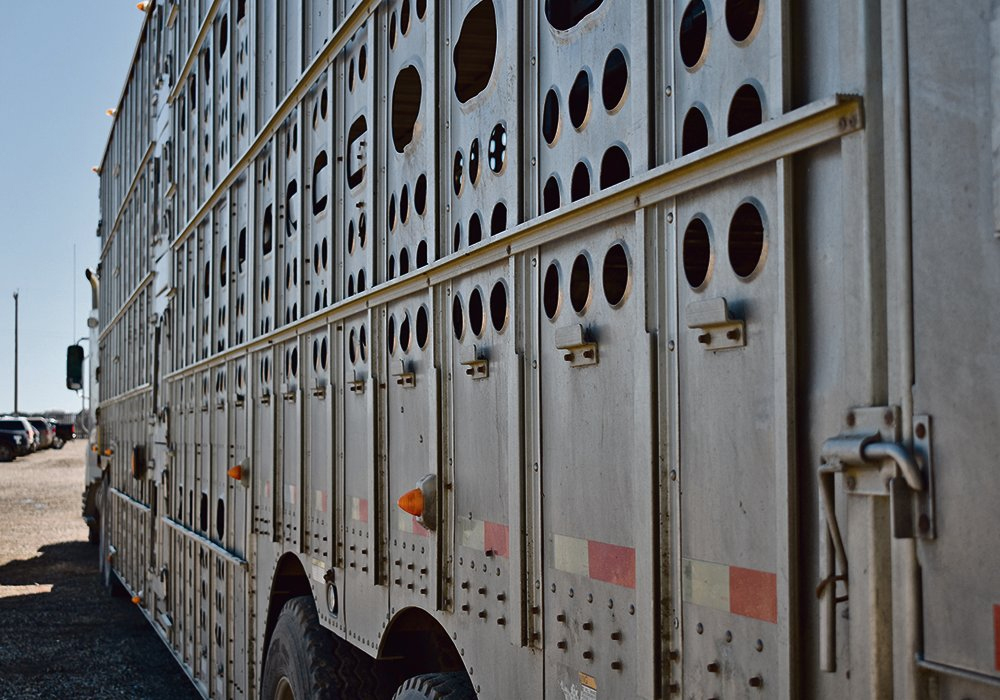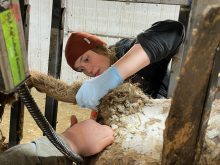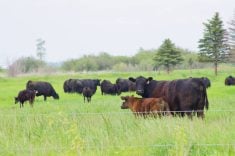Three studies have now concluded that a rest stop during long transport does not benefit weaned calves.
However, the Canadian Food Inspection Agency says it does not plan changes to its regulations that require an eight-hour rest stop, during which cattle are to be unloaded, fed, watered and rested, and then re-loaded, after 36 hours of travel.
The regulations were released in 2017 but not amended until two years later.
The previous 1977 regulations allowed transport for up to 48 hours without feed, water or rest.
The three studies done by Agriculture Canada researchers to see how the new regulations would affect cattle have consistently shown no improvement in animal health and welfare.
Read Also

Canadian Food Inspection Agency extends chronic wasting disease control program consultation deadline
Date extended for consultation period of changes to CWD program
But CFIA notes there is no detriment, either.
“The CFIA has received the unpublished study from the Beef Cattle Research Council and will be reviewing the results, as done with any new science pertaining to animal welfare during transport,” the agency said in an emailed statement. “The study summary on the BCRC’s website supports the current maximum allowed interval without feed, water and rest for this class of cattle (36 hours) by showing that there was no significant difference between cattle stopping to receive feed, water and rest versus cattle transported for 35 consecutive hours.”
There are different regulations for different classes of cattle and for other livestock.
The most recent cattle transport study was funded partly by industry check-off dollars through BCRC but mainly by Agriculture Canada.
It included 328 commercial steer calves split into two groups. One group was preconditioned and the other calves were not weaned until the study began.
Preconditioning includes weaning, vaccinating, treatment with antibiotics and parasite control, and started on a backgrounding diet.
The cattle were transported for 20 hours. Then, half of each group was unloaded and rested according to the regulations. The other half was unloaded, sampled and immediately reloaded.
The calves then completed either four or 15 more hours of transport.
BCRC science director Reynold Bergen said the times simulated the approximate travel from Lethbridge to Thunder Bay, where rest stations are located, and then on to Kincardine, Ont.
Researchers collected all types of information from each calf at 10 different times before, during and after transport. Calves were also monitored for a month after arriving at the feedlot.
Bergen said this final study mirrored the results of the previous two.
He said the results aren’t surprising because a large study funded by Alberta Beef Producers in the early 2000s found the same thing. He said that’s when the CFIA first began talking about updating the regulations.
That study was the world’s largest cattle transport study at the time, looking at 9,000 loads of cattle, or about 500,000 animals. This included fat cattle, feeders, weaned calves and cull cows.
“At the end of the day when they did the math and averaged it across all of those different types of cattle, they found that with short haul trips, short being four hours or less, 99.98 percent of cattle were getting to the end of their trip without any signs of poor health or poor welfare,” Bergen said. “When they looked at the long haul trips, all the way up to 48 hours, the result was 99.95 percent of them coming off in great condition.”
Despite those results, CFIA moved ahead with proposed changes.
The most recent study measured factors like lameness, weight, shrink, feeding behaviour, alertness, dehydration and more.
Bergen said the pre-conditioned calves were found to be more fit for the trip than those just weaned. It didn’t matter whether the calves moved directly from the ranch or through an auction mart. Different rest stop durations didn’t matter, either.
“They found that short trips were a little bit better than long trips in terms of animal welfare but across all three of those studies they found that providing a rest stop just didn’t provide any benefit to the transport outcomes of those calves,” he said.
During the rest stop 95 percent of the pre-conditioned calves went to the Growsafe feed bunk at some time, but only 15 percent of the nonpreconditioned did. Bergen observed the rest stop only prolonged the time the latter were off feed.
The study found that most of the calves were alert and walking regardless of the trip length or rest. None died during the first month on feed but 25 were treated for respiratory disease; this treatment number was higher for pre-conditioned calves, those traveling shorter distances and those that were rested.
Given the results of the studies, industry hopes enforcement will be based on the outcomes.
“CFIA has a brand as being science-based and being outcome-based and so it’s a shared goal that we and CFIA both want cattle to be transported responsibly and we all want those cattle to come off the trip in good condition,” said Bergen.
The agency said the requirement to stop for eight hours of rest every 36 hours will be enforced.
“CFIA inspectors continue to verify compliance with all requirements of Part XII of the Health of Animals Regulations in their day-to-day inspections and exercise their discretion to determine the control and/or enforcement actions that are appropriate in the circumstances,” it said.
The researchers did look at the cattle in which problems were detected. There were virtually none in fat cattle and yearlings, likely because they are young, strong and well fed, he said. Weaned calves and cull cows are the groups that could see negative outcomes.
Bergen said one of the reasons weaned calves may not benefit from rest is because some just came off pasture and don’t know what feed bunks or water bowls are.
“Cull cows are going to be different,” he said. “They are older and they are weaker, generally. I wouldn’t be surprised if long haul cull cows might benefit from a rest stop. But that’s a hunch and the research would have to be done to actually answer the question.”
Bergen also said it is possible that cattle are getting enough rest when the truck drivers pull over for their own break.
“One of the things that concerns everybody is that it’s the loading and unloading where cattle are most likely to get injured and if it doesn’t look like they’re eating or drinking much anyway, maybe that rest that the driver is taking when they stop and pull over for a couple of hours, cattle have a chance to rest then too.”
















